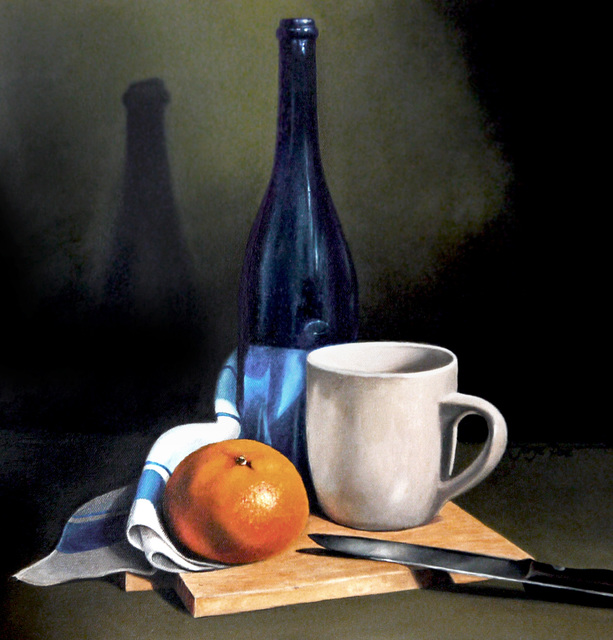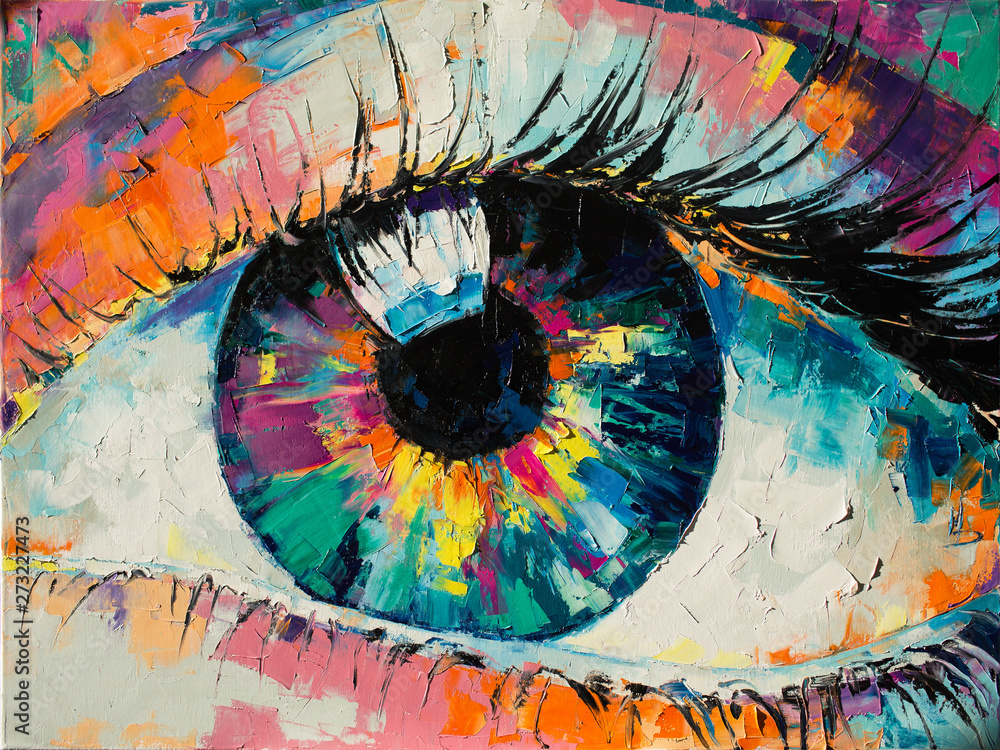Modern and Abstract Oil Paintings for Sale
Modern and Abstract Oil Paintings for Sale
Blog Article
Checking out Everything About Oil Paintings: A Guide to Understanding Their Beauty and Worth
Oil paints have mesmerized audiences for centuries, offering a glimpse into the imaginative mastery of various periods. Their abundant background is intertwined with innovative techniques and extensive psychological expression. Comprehending the materials and methods behind these artworks can enhance gratitude. Additionally, the market for oil paints offers chances for enthusiasts and capitalists alike. As one explores this fascinating globe, the concern develops: what makes an oil painting absolutely important?
The Background of Oil Paint: A Journey With Time
Although oil painting has origins that date back to old times, it absolutely grew during the Renaissance, when musicians found its flexibility and abundant color capacity. Early instances can be traced to the 7th century, with strategies progressing notably throughout cultures. The tool ended up being popular in Northern Europe in the 15th century, particularly via the works of musicians like Jan van Eyck, that originated its use for thorough realism and lively tones. This period noted a separation from tempera paints, enabling for greater deepness and appearance. As oil paint spread, it influenced numerous musicians, resulting in work of arts by renowned figures such as Leonardo da Vinci and Rembrandt. The tool's legacy proceeds, shaping the art world well right into contemporary times.
Understanding Oil Paints: Products and Techniques
As artists explore the world of oil paints, they encounter a diverse range of products and strategies that specify this tool. The key parts of oil paint consist of pigments, which provide color, and drying oils, such as linseed, that bind the pigments and help with application. Different additives can customize the paint's appearance and drying time, enhancing flexibility. Strategies like glazing, where clear layers are accumulated, and impasto, which includes applying thick paint, enable different visual impacts. Furthermore, making use of brushes, scheme blades, and also fingers can produce special appearances and coatings. Understanding these materials and methods enables artists to completely reveal their imagination and attain the wanted impact in their artwork.
The Function of Color in Oil Paintings
Shade plays a crucial function in oil paintings, affecting both visual appeal and psychological resonance. Understanding shade theory basics, consisting of the connections between tones, can improve an artist's capacity to communicate state of mind and environment. Additionally, understanding shade mixing strategies permits greater deepness and splendor in a painting's scheme.

Shade Concept Fundamentals
Comprehending color theory is vital for musicians functioning with oil paints, as it creates the structure for developing aesthetically appealing and unified make-ups. Shade theory incorporates the research study of how colors engage, the color wheel, and the partnerships in between primary, second, and tertiary shades. Musicians utilize corresponding shades to enhance contrasts and develop centerpieces, while comparable colors advertise unity and cohesiveness within an item. Furthermore, the concepts of awesome and cozy colors affect the perception of deepness and space in a paint. Realizing these principles allows musicians to manipulate shade effectively, leading the customer's eye and communicating their designated message. Mastery of shade theory inevitably enriches an artist's capacity to convey feelings and concepts through their job.
Emotional Effect of Shade
The emotional effect of shade in oil paintings plays an essential duty in exactly how viewers attach and perceive with art work. Colors evoke certain feelings and state of minds, affecting the visitor's mood. For instance, cozy colors like oranges and reds can develop a feeling of warmth and energy, while great tones such as blues and greens typically stimulate calmness or self-questioning. Artists tactically pick color palettes to boost narrative elements, guiding the audience's emotional journey. The saturation and comparison of shades better amplify these effects, attracting focus and creating focus. Ultimately, the interplay of colors in oil paints not just improves their aesthetic appeal however additionally works as an effective medium for psychological expression, improving the customer's experience and analysis.
Color Mixing Techniques
While many aspects of oil paint add to the general composition, mastering color mixing techniques is vital for accomplishing wanted effects and depth. Shade blending can be come close to with different techniques, consisting of the additive and subtractive procedures. Additive blending involves incorporating colors of light, while subtractive mixing relies upon pigments, where shades blend to create brand-new shades. Musicians frequently make use of a minimal combination to produce harmonious works, comprehending the connections between main, secondary, and tertiary shades. Techniques such as glazing and scumbling better improve deepness and luminosity. By masterfully blending colors, a musician can evoke feelings, create focal factors, and achieve a feeling of realistic look, eventually boosting the painting's visual and emotional impact.
Famous Oil Painters and Their Iconic Functions

Renowned for their proficiency of shade and technique, oil painters have produced some of the most renowned artworks in history. Popular artists like Vincent van Gogh astounded target markets with his stirring brushwork in "Starry Night," while Claude Monet's "Impression, Dawn" laid the groundwork for Impressionism. Leonardo da Vinci's "Mona Lisa" stays an enduring sign of imaginative genius, showcasing his ability in recording human expression. Meanwhile, Rembrandt's "The Night Watch" illustrates his innovative use light and darkness. Other noteworthy numbers consist of Pablo Picasso, who revolutionized modern art with his bold trial and error in jobs like "Les Demoiselles d'Avignon," and Georgia O'Keeffe, whose lively representations of landscapes and flowers helped specify American innovation. Each artist's distinct design added substantially to the oil paint landscape.
Exactly how to Assess the Quality of an Oil Paint
Reviewing the high quality of an oil painting involves a mindful analysis of craftsmanship techniques, along with an evaluation of color and make-up. Observing brushwork, layering, and the application of paint can expose the artist's ability level. Additionally, the interaction of colors and the total plan of elements contribute considerably to the paint's aesthetic worth.
Evaluating Workmanship Strategies
A thorough analysis of workmanship techniques is important for identifying the quality of an oil paint. Evaluators should initially check out the application of paint; thick, distinctive brushstrokes may recommend an experienced hand, while overly consistent applications can show a lack of depth. oil paintings for sale. The layering strategy is likewise vital; the presence of lusters and varied density can boost luminance and intricacy. Additionally, the top quality of the products made use of, such as the canvas and pigments, plays a substantial duty in resilience and general visual. Attention to detail in aspects like sides and shifts in between colors mirrors the artist's dedication to their craft. Ultimately, these techniques add to the paint's psychological impact and market price, serving as signs of the musician's skill and intent
Assessing Color and Make-up
While evaluating the top quality of an oil painting, one need to focus on the interaction of shade and composition, as these elements are essential to the art work's total effect. Shade options can stimulate feelings and develop read more mood; consequently, the artist's combination must be analyzed for harmony and contrast. A well-balanced structure routes the audience's eye and develops a sense of unity. Artists often employ methods like the rule of thirds or leading lines to improve aesthetic passion. Furthermore, the usage of light and shadow can add deepness, improving the three-dimensionality of the paint. Inevitably, an effective oil paint weds color and composition, engaging the audience and inviting a much deeper admiration of the musician's vision and method.
Taking care of and Preserving Oil Paintings
Correct care and conservation of oil paints is necessary for preserving their stability and longevity. To protect these artworks, it is essential to present them away from direct sunshine, which can trigger fading and discoloration. Maintaining a secure atmosphere with controlled temperature and moisture additional aids in preventing damages. Cleaning up should be done delicately utilizing a soft, dry towel, staying clear of any type of severe chemicals that could damage the paint or varnish. Routine assessments for indicators of degeneration, such as cracking or flaking, are a good idea. When delivering or storing oil paintings, proper extra padding and framework are needed to prevent physical harm. Ultimately, persistent care adds to the visual charm and value of oil paintings in time.
The Market for Oil Paintings: Investing and accumulating
Understanding the marketplace characteristics for oil paintings is important for enthusiasts and investors alike. The worth of these artworks is influenced by numerous factors, including the artist's online reputation, historical value, and current patterns. Collection agencies often seek items that reverberate directly while considering prospective recognition in worth. Public auctions and galleries function as primary places for buying and marketing, with prices changing based on demand and rarity. Buying oil paints calls for study into the market, in addition to an understanding of authenticity and provenance. Furthermore, emerging artists may use possibilities for significant returns, while established names can command high costs. Overall, a critical method to accumulating can yield both aesthetic enjoyment and financial rewards.

Frequently Asked Inquiries
What Are the Environmental Influences of Oil Painting Products?
The ecological impacts of oil painting materials include the release of unstable organic compounds (VOCs), dangerous waste generation, and source removal for pigments. These elements add to contamination and eco-friendly destruction, elevating problems amongst ecologically conscious musicians and customers.
Exactly How Do Various Canvases Influence Oil Paint Results?
Different canvases influence oil painting results considerably. Structure, surface area, and absorbency quality can alter paint application, drying out times, and shade vibrancy. Artists commonly select certain canvases to accomplish desired results and boost their imaginative expression.
Can Oil Paintings Be Brought Back if Damaged?
Oil paintings can undoubtedly be brought back if harmed. Expert conservators utilize numerous methods to fix rips, clean surfaces, and address discoloration, making certain that the artwork preserves its original beauty and value for future generations.
What Are the Indicators of an Initial Oil Paint?
The indicators of an initial oil paint consist of noticeable brush strokes, appearance variants, and an irregular canvas weave (oil paintings for sale). In addition, credibility might be validated with provenance, signatures, and the visibility of a varnish layer one-of-a-kind to oil tools
How Has Modern Technology Influenced Modern Oil Painting Techniques?
Technology has actually greatly affected modern oil painting techniques by presenting digital devices for planning, improved products for structure and long life, and online systems for offering and sharing art, therefore broadening musicians' creative opportunities and target market reach. Oil paint has origins that date back to ancient times, it absolutely thrived throughout the Renaissance, when musicians discovered its versatility and rich shade capacity. The psychological influence of color in oil paints plays an essential duty in how customers regard and connect with artwork. While lots of facets of oil painting add to the total structure, mastering shade mixing strategies is crucial for accomplishing wanted effects and depth. Reviewing the quality of an oil painting entails a mindful assessment of workmanship strategies, as well as an evaluation of shade and composition. While assessing the high quality of an oil painting, one need to concentrate on the interaction of shade and make-up, as these components are fundamental to the artwork's overall effect.
Report this page